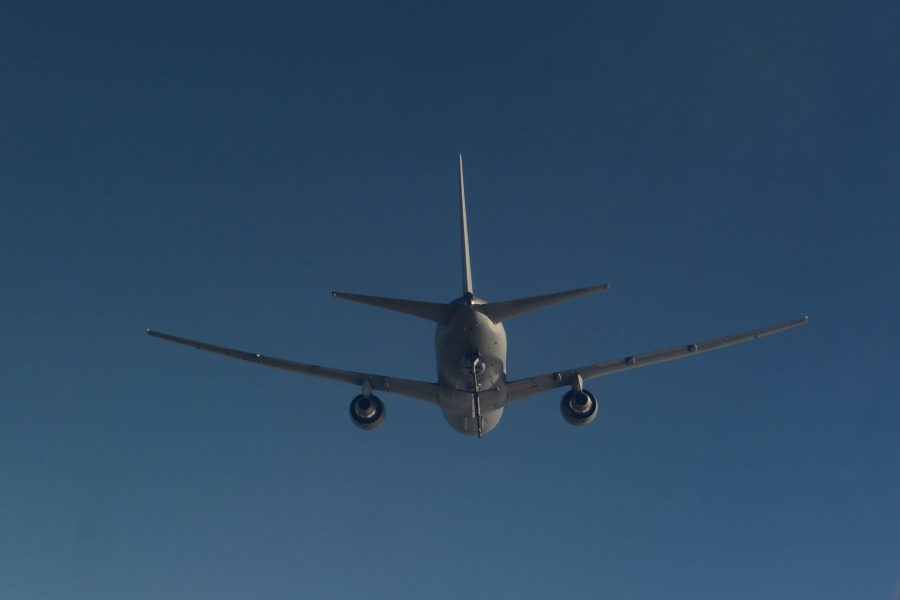Boeing’s board of directors has named Robert “Kelly” Ortberg, the new chief executive officer of the embattled aerospace giant, the company announced July 31. Since early this year, the company has suffered a rash of accidents and high-visibility quality problems. Meanwhile, losses continue to pile up, with Boeing’s defense and space business losing close to $1 billion, making up most of the company’s losses.
Ortberg will take over for David Calhoun in mid-August, the company announced. Calhoun said earlier this year he would retire by the end of the year.
Ortberg worked for decades at Rockwell Collins, where he rose from a program manager in 1987 to president and CEO in 2013, spending the next eight years leading the company’s integration with RTX. He retired from RTX in 2021. The other leading candidate was reportedly Patrick Shanahan, former Boeing executive, Acting Secretary of Defense and now CEO of Spirit Aerosystems, which Boeing is buying back to better integrate its production efforts.
“There is much work to be done and I’m looking forward to getting started,” Ortberg said in a stament issued by Boeing.
The announcement came along with Boeing’s second-quarter results, which showed a $913 million loss in the Defense and Space sector, as part of a company-wide loss of $1.4 billion, and the disclosure of a new deficiency with the KC-46 tanker.
The losses were on “certain fixed-price development programs, including a $391 million loss on the KC-46A program, largely driven by a slowdown of commercial production and supply chain constraints,” the company said. Boeing’s losses on the KC-46 now amount to $7.5 billion
Air Force KC-46 program officials, speaking with the press in Dayton, Ohio, Tuesday, said they have added a seventh major deficiency to the list that Boeing must correct at its own expense on the fixed-price development contract.
The new problem is with a fuel pump, the vibrations of which are damaging the jet’s air ducts. Program Executive Officer Kevin D. Stamey said Boeing is aggressively fixing the damaged ducts, is already testing a permanent correction, and the problem may soon be taken off the books, but for now it is a “Category 1” deficiency, he said.
Among the others, program officials acknowledged that corrections to the Remote Viewing System, known as RVS 2.0, that were to be fully implemented this year will not be fixed until 2026. Tests to fix another problem with the KC-46, a so-called “stiff boom,” which prevents it from connecting with and refueling the relatively low-thrust A-10, has been in testing since May, they said.
Stamey said the discovery of the deficiency and the company’s move to correct the problem was evidence that Boeing “lean forward when they have a quality escape.”
Boeing said in releasing its financial performance numbers that other defense losses were recorded on the T-7A trainer, the “Air Force One” VC-25B Presidential Transport, and the NASA Commercial Crew programs. Those programs suffered from “higher estimated engineering and manufacturing costs, as well as technical challenges,” the company said.

On a positive note, the aerospace giant said that its F-15EX achieved initial operational capability with the Air Force in July and that it delivered seven MH-139A Grey Wolf helicopters to the service for missile field support.
“We remain cautiously optimistic about the long term prospects of our defense business, and we believe we can progress toward a more historical level of performance over time,” Calhoun said on Boeing’s second-quarter earnings call. He reiterated that Boeing is exercising “contracting discipline” in not underbidding important contracts to secure future work.
Calhoun said Ortberg was “the board’s choice,” but he said he liked the pick. He also said he didn’t expect Ortberg to do an executive housecleaning.
“I don’t think he’s coming in with a notion to change a lot of folks,” he said on the call. “We’re in recovery mode. And we’ve got to get this thing stable and move forward.”


